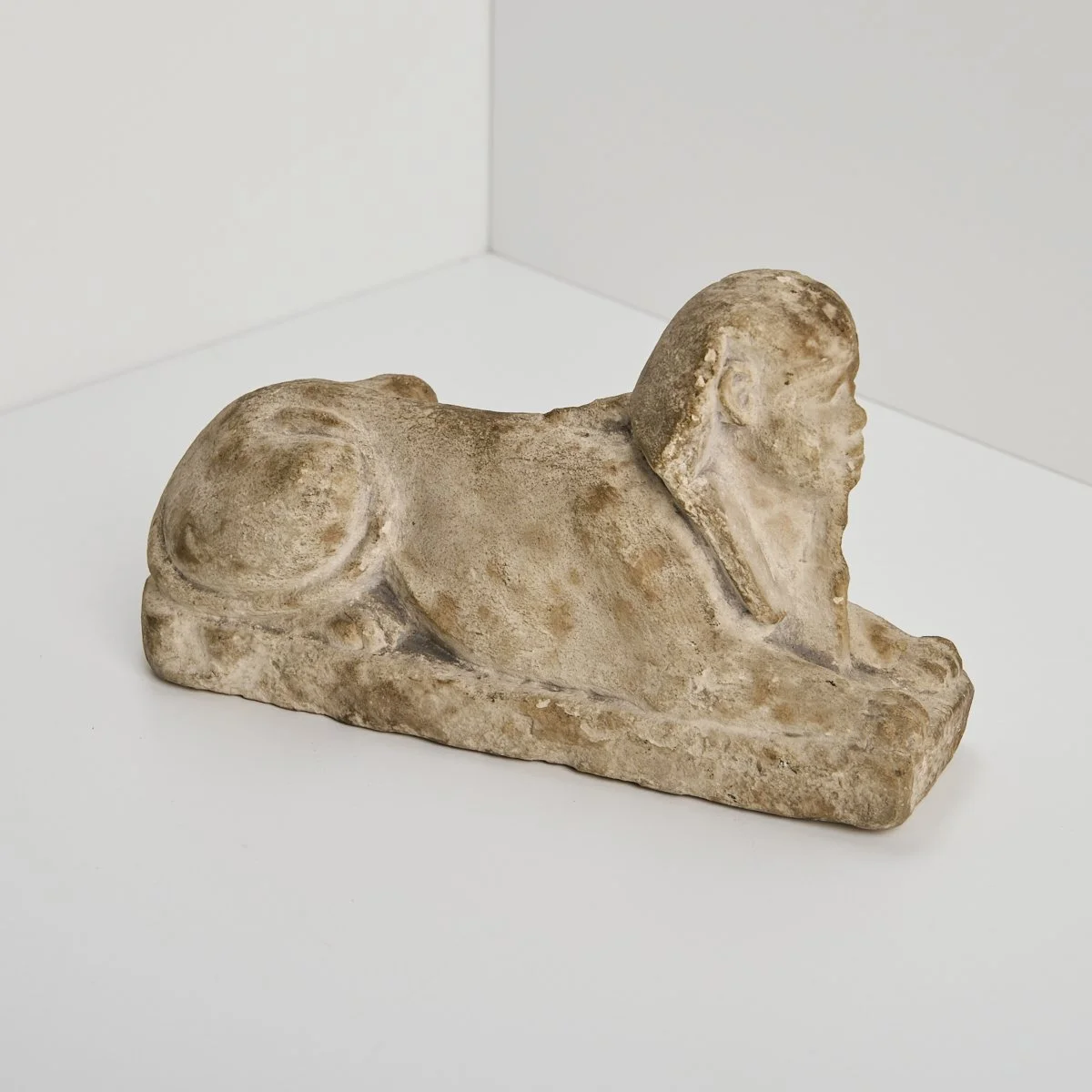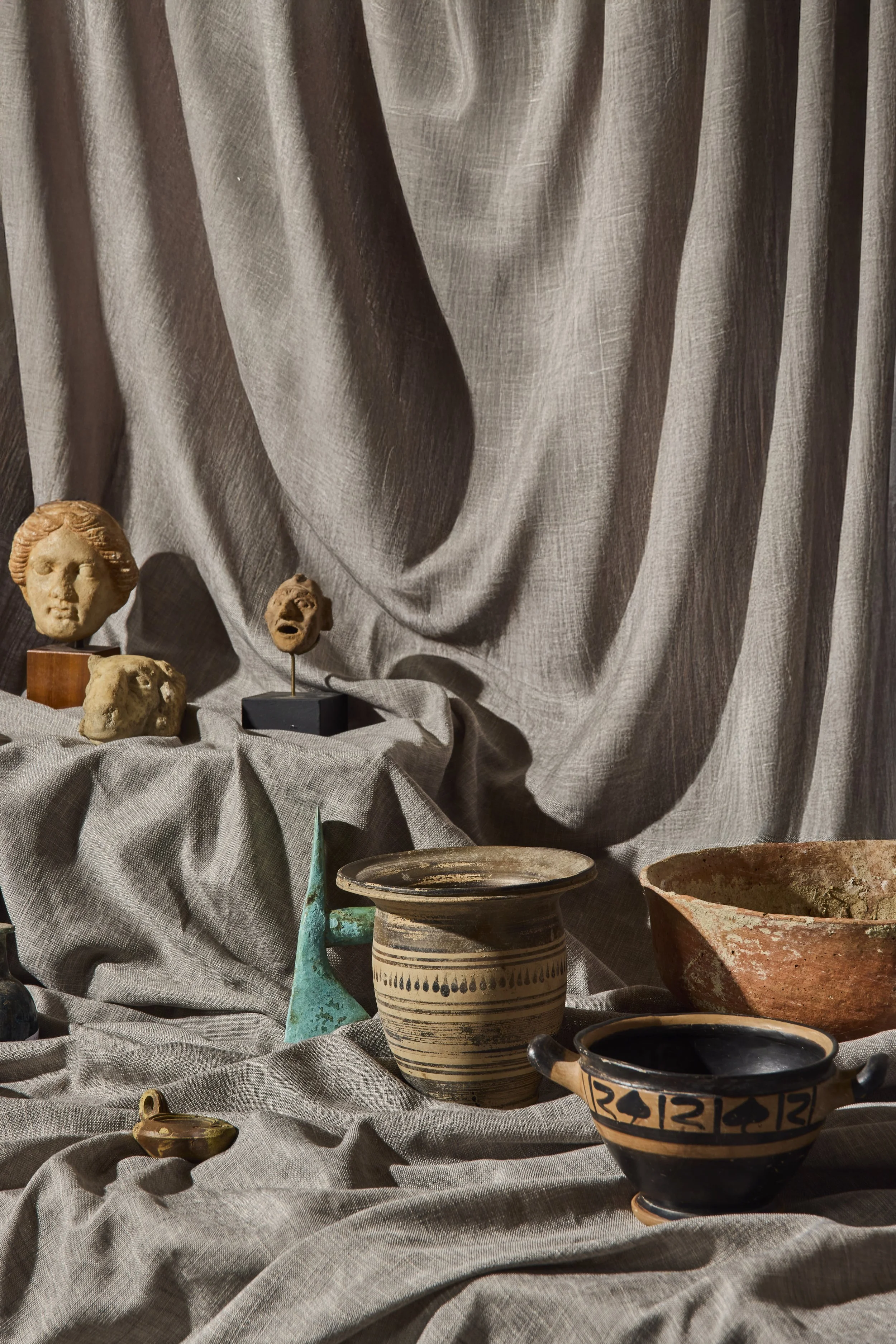An Interview with Antiquities Expert Robert Loosley
As part of the latest catalogue of Material Culture, Webb’s is offering 16 items sourced by Robert Loosley from Antiquarius— a company he founded with his wife Jenny Loosley in the 1980s and which specialises in dealing, globally, in classical antiquities and coins of the Ancient World. We spoke to Robert about his illustrious career and some of the highlights he is bringing to the Material Culture auction through Webb’s.
A selection of artefacts sourced by Loosley featured in our forthcoming Material Culture live sale
Material Culture is culture made physical. Our May catalogue is out now and it is full of objects that connect us to the past: to the lives and contexts of those who came in contact with, and used these rare and expertly crafted items. Highlights include, among many others: antiquity pieces from ancient Rome, Greece, Egypt, and Mesopotamia offered here by an internationally renowned expert in the field.
An Interview with Antiquities Dealer Robert Loosley
You have had a very impressive career in the field of antiquities. Can you tell us a little about the highlights?
I'm a specialist dealer in Roman, Greek and Egyptian antiquities and ancient coins. For many years I worked in this field in London before moving to New Zealand in 1980. I also undertake valuations of all those items for universities and museums. I am on a committee for the Australian Government (the only New Zealander) so conduct large collection valuations for places like Macquarie University and Sydney University. Generally I am purchasing and selling items and carrying out Individual valuations, which can be very varied and occasionally something extraordinary comes to light.
I bet! What have been some of your most memorable items?
I suppose a coin of Brutus, one of the assassins of Julius Caesar: a silver coin with his portrait. Things like that make your heart flutter! Most of the items are purchased privately but sometimes end up at the British Museum and other academic institutions.
Tell us about some of the pieces that you have brought to Webb’s upcoming Material Culture auction?
This collection represents a snapshot of my deceased client’s collecting interest: coins andartefacts from the Ancient World. I thought it would be an opportunity for these objects to be viewed by the general public, who perhaps are not particularly familiar with such pieces and may not realise they are available here in New Zealand.
In terms of what is in the collection… There is a Greek Marble Head that is particularly pleasing, partly because the hair is the original colour. Usually a lot of marble in Greek and Roman sculpture is plain in colour, but in fact when these items were made 2,000 years’ ago or more, they were actually painted quite garishly. By the time we come to them, that colour has worn off over the years and you often don't get any paint on these marble sculptures. This particular ‘head’ has got that original paint on the hair, which is very, very good.
There is also a Tang Dynasty Horse which — although I generally don't deal with Chinese pieces — was special. It came from London and was from a group of six purchased from a dealer in London who was the chairman of the British Antiquities Dealers Association at the time. The first three of these horses were bought by someone who was presenting them to the Three Tenors [Luciano Pavarotti, Plácido Domingo and José Carreras ]. So there were only three others remaining in the group after that gift and this is one of those.
There is also a stunning terracotta head of an actor. What was the purpose of such an object when it was made?
Outside the theatre— where a performance had been conducted— there might have been a stall where you could buy these terracotta heads. They're basically caricatures to remind you of an event.
It's fascinating to think that you could be holding something so close to the origins of Ancient Greek playwriting and the origins of theatre. One of the things that is beautiful about these objects — aside from their craft— is the fact that they are connected to history and to some interesting people who might have owned these objects originally. For instance, where would you have originally found the Marble Head we spoke about earlier?
I think it is the goddess Aphrodite, although sometimes it's difficult to be absolutely sure which goddess is represented. I imagine that it was probably owned by somebody quite wealthy, and would have been in the home. Such sculptures would have been displayed by the Greeks and the Romans and indeed, the Egyptians because the ancients didn't just revere one God, they spread their favours, over many gods and goddesses for their protection. So possibly a home, possibly a temple.
Speaking of Egypt, there are a couple Egyptian pieces in this collection: like this stone sphinx which is possibly not ancient but provenance dates back to the 1850s. What would be the story behind an object like this?
When collecting Roman, Greek and Egyptian antiquities became popular in Europe — particularly around the 1700s and 1800s— people used to go on what is called the ‘Grand Tour’. Wealthy young people from England would go travelling around Europe and visit ancient sites. So, in order to satisfy the collecting instincts of some of these travellers, the local people would create something that was very similar to the original objects. This Egyptian sphinx is likely to be an example of this. Egyptology became particularly fashionable after Napoleon had invaded Egypt in the late 1700s.
How do these types of objects end up in New Zealand?
Antiquities are collected globally, both for their aesthetic appeal and historical connection. Of course, many New Zealanders are well educated and have travelled frequently and visited historic sites and museums in the ancient world. They have then become interested in the objects that relate to that history.
Robert Loosley has had a stellar, 55 year career in the field of antiquities, and has worked globally, including for B.A. Seaby Ltd London, Numismatists to the Queen and co-authored several standard works on Roman Coins. He is a life member of the American Numismatic Association and was a fellow of the Royal Numismatic Society and a member of the British Antiquity Dealers Association.
Material Culture
Live Auction | Monday 26 May, 6.30pm
On View | 21—26 May
Leah Morris
Head of Decorative Arts






















